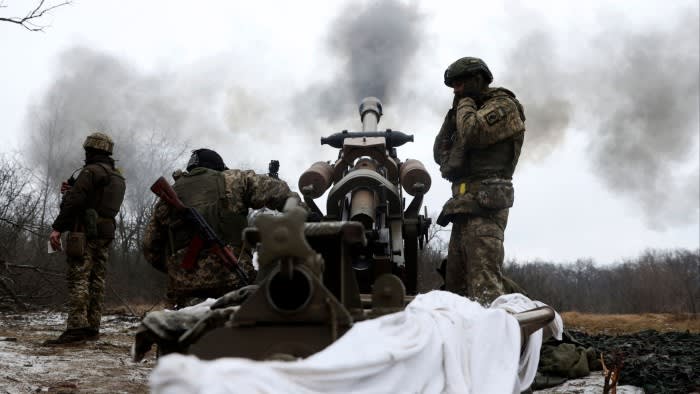Stay informed with free updates
Simply sign up to the War in Ukraine myFT Digest — delivered directly to your inbox.
Ukraine has urged western allies to fund its domestic weapons production with its recently ramped up manufacturing capacity now vastly exceeding the money available for orders.
“The fastest way to start production is to do it in Ukraine,” said Oleksandr Kamyshin, minister for strategic industries, in an interview with the Financial Times. “We are very capable. We are price competitive and we are close to the front lines.”
US military support for Ukraine is stalled with a $60bn aid package stuck in Congress. European governments have made sizeable bilateral pledges of military aid but with their own stockpiles largely exhausted are focused on cranking up their own industries to fill their inventories and equip Ukraine.
Ukraine’s once vast defence industry was largely defunct by the start of Russia’s full-scale invasion, but its companies have since retooled production lines, expanded their workforces and multiplied shifts. However, this capacity will be unsustainable without more contracts.
Ukrainska Pravda, a news outlet, last week calculated that Ukraine’s defence companies had the capacity to produce $18bn worth of armaments this year but had government appropriations worth only $9bn. The estimate was “more or less there”, said a Ukrainian official.

Ukraine spends nearly half of its $87bn budget on defence and relies on international donors to cover the other half, which covers public services and pensions.
The minister said that in some categories Ukraine could already produce advanced weaponry at lower costs than its western partners. He used the example of a recent donation from the Canadian government of 800 Canadian-made drones with an average unit cost of $87,000. He said Ukrainian companies could offer four different Ukrainian built models with similar or superior capabilities for $10,000-$25,000 a piece.
Kamyshin said Kyiv was “in discussions with close to 10 countries” about them financing procurement from companies in Ukraine, including fully indigenous enterprises and joint ventures with western firms.
Germany’s Rheinmetall last year signed a joint venture with Ukrainian Defense Industry JSC to produce infantry fighting vehicles and armoured personnel carriers.
“It could be quite a logical step to produce with German money,” Kamyshin said.
The minister said he was also asking the UK government to fund the production in Ukraine, under licence, of the L119 light gun, a 105mm towed howitzer made by BAE Systems.
Western military aid for Ukraine has so far been used to pay for drawdowns from national stockpiles, fresh procurement from western defence companies and off-the-shelf items from third countries, but not to fund production by Ukraine’s revived defence industry.
The European Commission has proposed that Ukrainian companies be able to tap EU funds, including the €5bn a year European Peace Facility agreed on Wednesday, for joint development and procurement of weapons systems, but it needs the approval of member states and the cash available is likely to be limited.
Kamyshin dismissed the idea that Ukrainian defence companies could become a competitive threat to suppliers elsewhere in Europe. Instead, Ukraine was adding capacity to its European allies at a time when they needed to rearm to face a heightened Russian threat, he said.
“We’ve got complementary capabilities that won’t compete but that will add to [those in] in the EU and Nato.”
Kamyshin said a revived defence industry was likely to be a pillar of Ukraine’s economic recovery once the war was over and that it was in the interests of western partners to rescue the country’s dependence on foreign assistance.
“We don’t want to keep asking for [aid] money,” he said. “We are a creative and reliable partner you want to have in your gang during hard times.”
